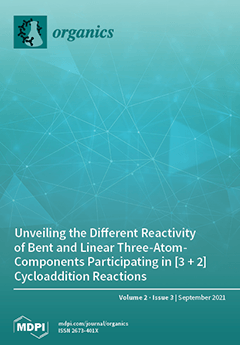para-Selective processes for the chlorination of phenols using sulphuryl chloride in the presence of various sulphur-containing catalysts have been successfully developed. Several chlorinated phenols, especially those derived by
para-chlorination of phenol,
ortho-cresol,
meta-cresol, and
meta-xylenol, are of significant
[...] Read more.
para-Selective processes for the chlorination of phenols using sulphuryl chloride in the presence of various sulphur-containing catalysts have been successfully developed. Several chlorinated phenols, especially those derived by
para-chlorination of phenol,
ortho-cresol,
meta-cresol, and
meta-xylenol, are of significant commercial importance, but chlorination reactions of such phenols are not always as regioselective as would be desirable. We, therefore, undertook the challenge of developing suitable catalysts that might promote greater regioselectivity under conditions that might still be applicable for the commercial manufacture of products on a large scale. In this review, we chart our progress in this endeavour from early studies involving inorganic solids as potential catalysts, through the use of simple dialkyl sulphides, which were effective but unsuitable for commercial application, and through a variety of other types of sulphur compounds, to the eventual identification of particular poly(alkylene sulphide)s as very useful catalysts. When used in conjunction with a Lewis acid such as aluminium or ferric chloride as an activator, and with sulphuryl chloride as the reagent, quantitative yields of chlorophenols can be obtained with very high regioselectivity in the presence of tiny amounts of the polymeric sulphides, usually in solvent-free conditions (unless the phenol starting material is solid at temperatures even above about 50 °C). Notably, poly(alkylene sulphide)s containing longer spacer groups are particularly
para-selective in the chlorination of
m-cresol and
m-xylenol, while, ones with shorter spacers are particularly
para-selective in the chlorination of phenol, 2-chlorophenol, and
o-cresol. Such chlorination processes result in some of the highest
para/
ortho ratios reported for the chlorination of phenols.
Full article





